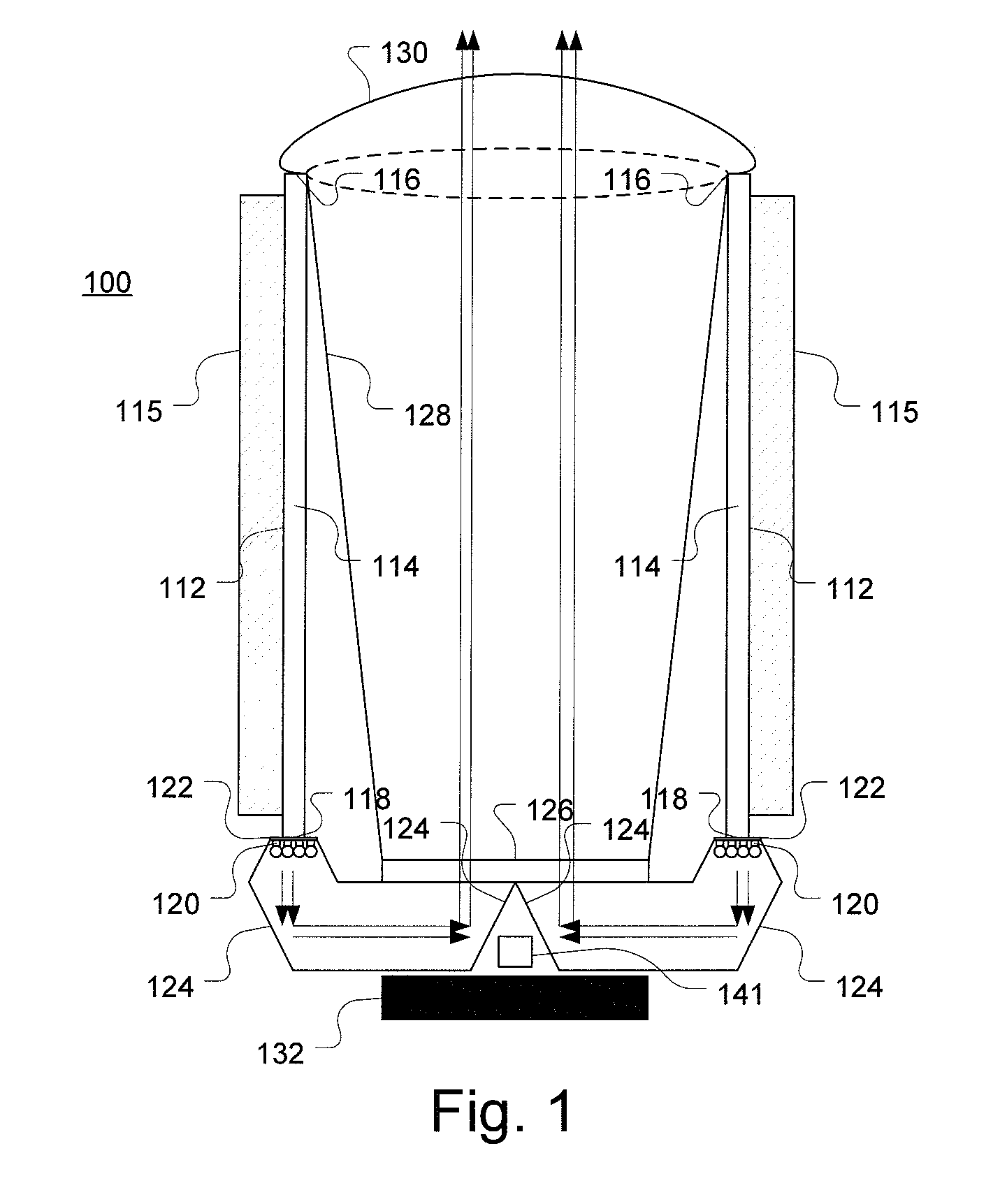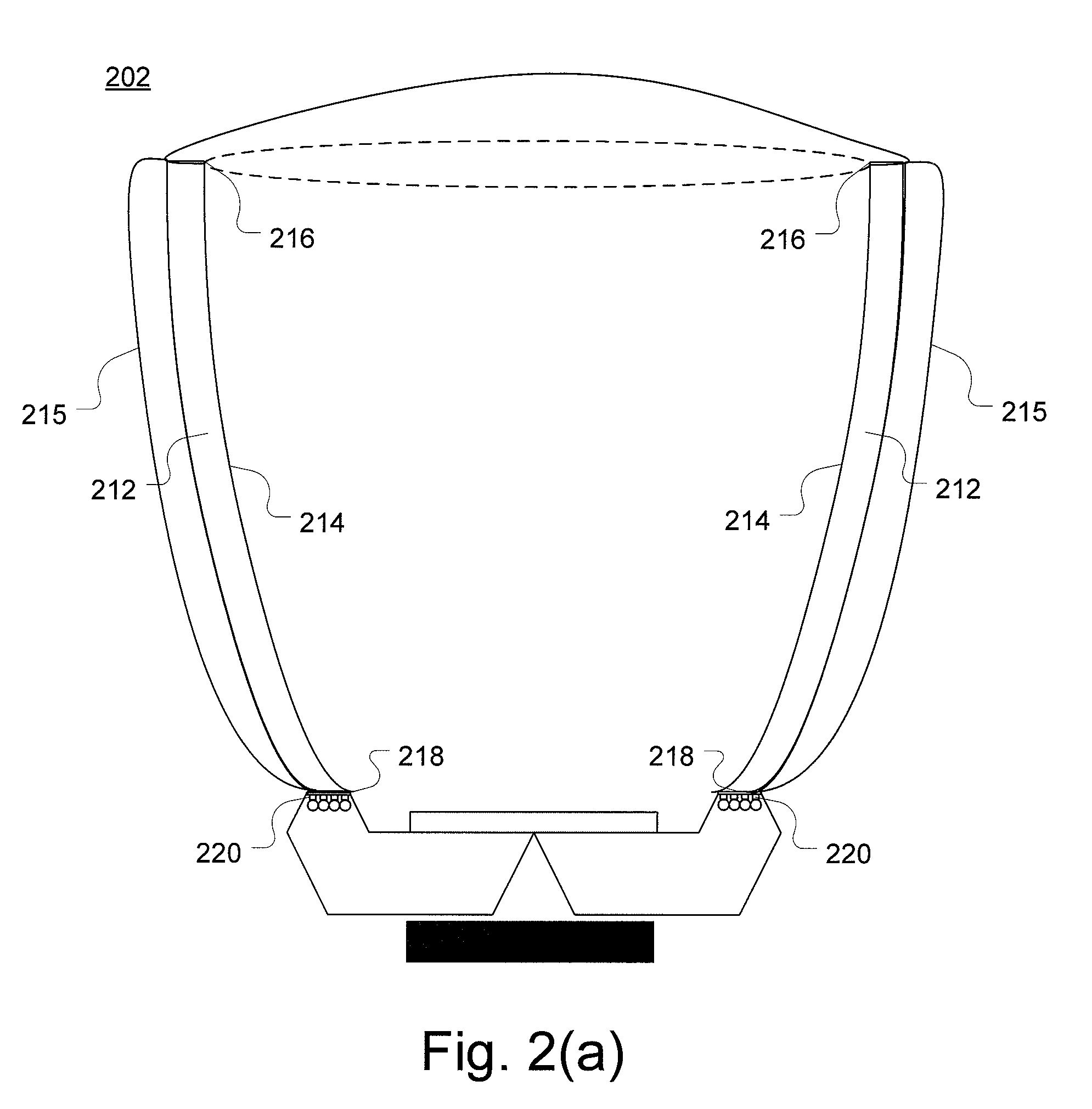Illumination module with similar heat and light propagation directions
a technology of illumination module and beam shaping, which is applied in the direction of lighting and heating apparatus, semiconductor devices for light sources, instruments, etc., can solve the problems of reducing the luminous flux of output light, and increasing the temperature of the substra
- Summary
- Abstract
- Description
- Claims
- Application Information
AI Technical Summary
Benefits of technology
Problems solved by technology
Method used
Image
Examples
example 1
[0086]Referring now to FIG. 2(a) which illustrates an illumination module according to one embodiment of the present invention. The illumination module 202 includes heat pipes 212 for cooling a plurality of light-emitting elements 220. The heat pipes 212 each include an intermediate bulk portion 214, a condenser region at one end 216 of the bulk portion 214 including an adjacent portion thereof and a evaporator region 218 at an opposite end of the bulk portion 214. The bulk portions 214 of the heat pipes 212 have reflective sidewall portions. The reflective sidewall portions of the bulk portions 214 also have parabolic cross-sections so as to form an optical element for beam shaping of the output light from the light-emitting elements 220. It can be appreciated by those skilled in the art that the shape of the sidewall portions of the bulk portions may be concave, elliptical, circular, or other shapes depending on the beam shaping requirements of the illumination module 200.
[0087]Th...
example 2
[0088]FIG. 3(a) illustrates an illumination module 302 according to one embodiment of the present invention. The illumination module 302 includes a plurality of heat pipes 312 having contact surfaces 318 in thermal communication with corresponding side-mounted light-emitting elements 320. A possible benefit of side mounting the light-emitting elements is that fewer reflections are needed for light extraction. Optical reflectors 324 or light guides are positioned along the path of the output light from the light-emitting elements 320 so as to bend the output light emanating from the light-emitting elements 320 in a direction along a longitudinal axis of the illumination module 302. Inside the envelope defined by the illumination module, and for the majority of the length of the illumination module, heat and light from the light-emitting elements both travel in substantially the same direction.
[0089]FIG. 3(b) illustrates one embodiment of the present invention similar to that illustra...
example 3
[0090]One embodiment of the present invention is shown in FIG. 4. Illumination module 400 includes heat pipes 412 and a plurality of light-emitting elements 420 grouped into arrays. Each array of light-emitting elements 420 is attached to the evaporator end of each heat pipe 412 and is thermally connected to the respective heat pipe 412 for transfer of heat from the light-emitting elements 420 to the heat pipes 412. The illumination module 400 also includes a tandem lens array 430 and 431 located at the entrance and aperture ends of the illumination module 400 to manipulate the optical characteristics of the output light.
PUM
 Login to View More
Login to View More Abstract
Description
Claims
Application Information
 Login to View More
Login to View More - R&D
- Intellectual Property
- Life Sciences
- Materials
- Tech Scout
- Unparalleled Data Quality
- Higher Quality Content
- 60% Fewer Hallucinations
Browse by: Latest US Patents, China's latest patents, Technical Efficacy Thesaurus, Application Domain, Technology Topic, Popular Technical Reports.
© 2025 PatSnap. All rights reserved.Legal|Privacy policy|Modern Slavery Act Transparency Statement|Sitemap|About US| Contact US: help@patsnap.com



